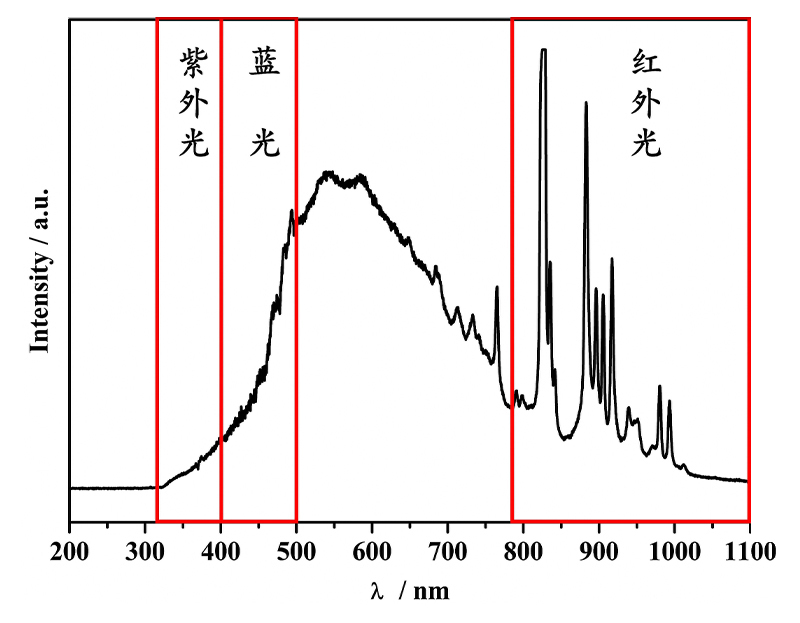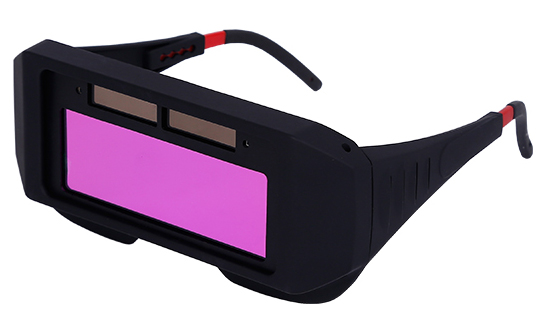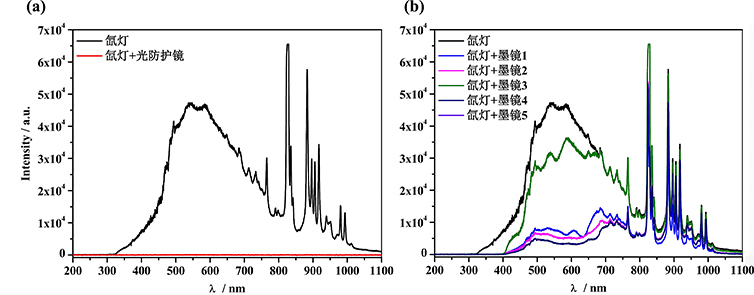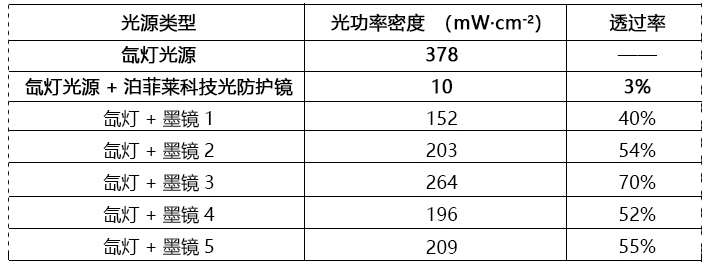The xenon lamp light source used in the laboratory emits a continuous spectrum of light, with the main emission band concentrated in the range of 320 nm to 1000 nm. As shown in Figure 1, the light that poses a risk to the human eye includes ultraviolet light with wavelengths between 320 nm and 400 nm, blue light between 400 nm and 500 nm, and infrared light greater than 780 nm.

Figure 1. Xenon Lamp Light Source Emission Spectrum
The human eye has two natural defenses: the cornea and the crystalline lens. The cornea is located at the front of the eye and serves as the first line of defense, while the crystalline lens is located behind the cornea. Both the cornea and crystalline lens absorb ultraviolet light, allowing visible and infrared light to pass through for imaging on the retina. These structures work hard to absorb ultraviolet light but are also at risk of damage, making them a focal point for protection.
Laboratory Strong Light Protection - Ultraviolet Light Hazard
Ultraviolet light in the range of 320 nm to 400 nm can damage and cause necrosis of the corneal conjunctival epithelial cells, leading to acute corneal conjunctivitis, and even cataracts. Additionally, ultraviolet light can cause the binding of phosphate ions in the lens to calcium ions in the aging lens, leading to lens calcification or hardening, protein denaturation, and opacity, ultimately reducing visual acuity.
Laboratory Strong Light Protection - Blue Light Hazard
The blue light component of visible light refers to light with wavelengths between 400 nm and 500 nm. Blue light has the highest photon energy in visible light and can penetrate the crystalline lens to reach the retina, causing atrophy or death of retinal pigment epithelial cells. The death of photosensitive cells can lead to vision loss or even complete blindness. This damage is irreversible, and high-intensity blue light has a greater impact on the human eye's retina than near-infrared light. Additionally, blue light can cause macular degeneration, and the crystalline lens in the human eye gradually becomes cloudy, leading to cataracts.
Laboratory Strong Light Protection - Infrared Light Hazard
The reason for the damage caused by infrared light with wavelengths greater than 780 nm to the eyes is that the eyeball contains a significant amount of fluid, and this fluid has an absorbing effect on infrared light, converting it into heat. This leads to an increase in temperature within the crystalline lens. When the temperature inside the crystalline lens exceeds a certain limit, it can cause denaturation and coagulation of various protein components within the lens, leading to cataracts.
To reduce the harm to the eyes of laboratory personnel from xenon lamp light sources, Perfectlight Technology has introduced Perfectlight Technology Eye Protection Glasses, which effectively protect against strong light and ultraviolet light.

Figure 2. Perfectlight Technology Eye Protection Glasses
We compared the light protection effectiveness of Perfectlight Technology Eye Protection Glasses with regular sunglasses available in the market. Under the same irradiation distance, we tested the spectral distribution and light power density of xenon lamp light passing through Perfectlight Technology Eye Protection Glasses and regular sunglasses.

Figure 3. Comparison of Protection Effectiveness between Perfectlight Technology Eye Protection Glasses and Regular Sunglasses
From Figure 3(a), it can be seen that Perfectlight Technology Eye Protection Glasses provide full-spectrum protection against light in the range of 320 nm to 1000 nm, and the protection effect is significant.
From Figure 3(b), it can be seen that regular sunglasses only provide protection against ultraviolet light within 400 nm, and they do not have any significant protection against blue light and infrared light, except for weakening the intensity of the light.
From the data in Table 1, it is evident that the transmittance of Perfectlight Technology Eye Protection Glasses is only 3%, indicating significant protection, while regular sunglasses have a transmittance ranging from 40% to 70% with no noticeable strong light protection effect.
Table 1. Comparison of Protection Data between Perfectlight Technology Eye Protection Glasses and Regular Sunglasses

Perfectlight Technology Eye Protection Glasses feature an adjustable design for a comfortable fit, side ventilation for good airflow, a frosted treatment on the forehead to prevent strong overhead light and reflections, and excellent resistance to strong light impacts.